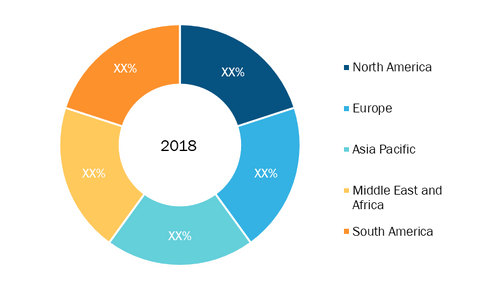The global logistics robots market accounted for US$ 4,356.2 Mn in 2018 and is expected to grow at a CAGR of 19.10% over the forecast period 2019-2027, to account for US$ 20,293.4 Mn by 2027.
The growing percentage of aging population across the globe is one of the major factor for the reduction of labors across various industries. Each country across the world is witnessing an upsurge in the number of elderly people in their community. Population aging has become one of the substantial factor for the social transformations in the 21st century across all sectors, which embraces labor as well as financial markets. Though, various countries such as Italy, Japan, and many more are the countries which listed the maximum number of the aging population proportion, by considering a substantial percentage of their population over 65 years. According to WHO, ~ 2 Mn people around the world are expected to be above 60 years old by the year 2050, which is accounted for the triple of what it was in 2000. The upsurge in the number of aging population accounted for the labor shortage.
The implementation of logistics robot across several industries plays an important role, as it reduces the overall cost of the process, increasing productivity, enhancing safety, and reduce human error. The rapid technology advancements across warehouse globally, is focusing on the requirement related to the difficulties faced by supply chain process and assuring that the technology used associated with the business objectives. The implementation of robots across different units, functions, and stages in product lifecycles have been a key challenge faced by warehouses today on their growth path.
The logistics robots market has been derived from market trends and revenue generation factors from five different regions across the globe namely; North America, Europe, Asia Pacific, MEA, and SAM. The APAC region holds the highest market share, whereas North America is projected to be the fastest-growing region as well in the coming years. North America is witnessing the fastest growth rate over the forecast period. The supply chain industry in the region is witnessing constant transformation, which is significantly impacting the fundamentals of warehousing and distribution. These transformations are related to the developing technologies that will fill the gap between supply chain operations and the emerging requirement of the customers. This constant digitalization and technological modifications are influenced by the penetration of e-commerce, which has allowed the customers in the region to make an immediate as well as real-time demand impact on the order fulfillment operations.
The logistics robots market by function is segmented into pick & place, palletizing and de-palletizing, transportation, packaging. The transportation segment holds the major share in the market, and is expected to be the fastest-growing segment during the forecast period. The globally traded goods are shipped in standard containers, which demands the application robotics for superior operations. On the basis of industry, the logistics robots market is segmented into healthcare, e-commerce, automotive, outsource logistics, retail, consumer goods, food and beverages, others. The e-commerce led the market with a highest market share. The continuously rising popularity of e-commerce, along with the shortage of skilled labor in warehouses, is a significant factor fueling the adoption of logistic robots in the e-commerce industry. By robot type, the logistics robots market is segmented in to robotic arm, AGV, collaborative mobile robots, others. AGVs are primarily used in the transportation of raw materials, finished goods, and work-in-process materials associated with production lines; they are also used in storage/retrieval or other movements for picking and dropping purpose for distribution and warehousing applications.
The major players operating in the market for logistics robots market are AGV International., Clearpath Robotics, Daifuku Co. Ltd., Fanuc Corporation, Fetch Robotics Inc., KION GROUP AG, KNAPP AG, Kollmorgen, Kuka AG, and Toshiba Corporation.
Logistics Robots Market - Geographic Breakdown, 2018
Logistics Robots Market to 2027 - Global Analysis and Forecasts By Function (Pick & Place, Palletizing and De-palletizing, Transportation, Packaging); Industry (Healthcare, E-Commerce, Automotive, Outsource Logistics, Retail, Consumer Goods, Food and Beverages, Others); Robot Type (Robotic Arm, AGV, Collaborative Mobile Robots, Others)
Logistics Robots Market Dynamics and Analysis by 2027
Download Free Sample
The report segments the global logistics robots market as follows:
Global Logistics Robots Market - by Function
- Pick and Place
- Palletizing and De-palletizing
- Transportation
- Packaging
Global Logistics Robots Market - by Industry
- Healthcare
- E-Commerce
- Automotive
- Outsource Logistics
- Retail
- Consumer Goods
- Food & Beverage
- Others
Global Logistics Robots Market - by Robot Type
- Robotic Arm
- AGV
- Collaborative Mobile Robots
- Others
Global Logistics Robots Market - by Geography
- North America
- US
- Canada
- Mexico
- Europe
- France
- Germany
- UK
- Italy
- Russia
- Rest of Europe
- APAC
- Australia
- China
- India
- Japan
- South Korea
- Rest of APAC
- MEA
- Saudi Arabia
- UAE
- South Africa
- Rest of MEA
- SAM
- Brazil
- Argentina
- Rest of SAM
Contact Us
Phone: +1-646-491-9876
Email Id: sales@theinsightpartners.com